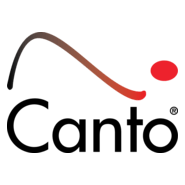
Canto: Complete Buyer's Guide
AI-powered digital asset management platform
Canto is an AI-powered digital asset management platform designed for organizations managing substantial visual content libraries across omnichannel retail operations.
Market Position & Maturity
Market Standing
Canto maintains a strong market position with recognition in industry analyst reports and a substantial global customer base including major brands like Sony Europe and Amorepacific, providing market validation for enterprise-grade capabilities[44][45][52].
Company Maturity
The platform demonstrates business maturity through its ability to serve mid-market to enterprise retailers with revenue ranging from $50M-$500M, particularly showing strong representation in apparel and beauty verticals[44][61].
Growth Trajectory
Canto's innovation trajectory through Canto Innovation Labs demonstrates ongoing development commitment, with advanced DAM capabilities development including real-time content versioning for luxury retailers and emerging technologies like NFT-linked DAM for authenticity tracking[52][66].
Industry Recognition
Recognition in industry analyst reports and enterprise customer adoption provides evidence of competitive viability in the digital asset management space[44][45][52].
Longevity Assessment
The vendor demonstrates longevity indicators through enterprise customer retention, ongoing innovation investment, and ability to serve complex deployment requirements. However, vendor lock-in considerations via proprietary metadata schemas require evaluation during platform selection[72].
Proof of Capabilities
Customer Evidence
Canto serves a global customer base including Sony Europe and Amorepacific, demonstrating capability to handle enterprise-scale deployments across diverse industries[44][45][52].
Quantified Outcomes
Broxap's marketing team achieved measurable improvements, noting that "Canto has made it quicker to access files and update website images—a more fluid process since implementation"[61].
Case Study Analysis
Lantmännen achieved substantial cross-department adoption through a 14-month connector-by-connector rollout, demonstrating 70% cross-department adoption through phased implementation approaches[63].
Market Validation
Customer evidence reveals mixed experiences with AI capabilities, where visual search performs better than generative features[48][54].
Reference Customers
Enterprise customers include Sony Europe and Amorepacific, providing market validation for enterprise-grade capabilities[44][45][52].
AI Technology
Canto's AI visual search technology represents the platform's core technical differentiation, enabling natural language processing for queries that exceed traditional keyword-based systems for standard product imagery[42][71].
Architecture
The platform's facial recognition technology for product identification shows promise in controlled environments, though customer evidence indicates performance variations in real-world deployment conditions with complex backgrounds[58][72].
Competitive Advantages
Canto's AI Visual Search technology provides clear differentiation through natural language processing capabilities that exceed traditional keyword-based systems for standard product imagery[42][71].
Market Positioning
Canto positions as a premium AI-powered DAM solution for mid-market to enterprise retailers with specific visual search requirements, though competitive disadvantages in PIM integration may limit market expansion in comprehensive enterprise scenarios[44][61][62][64].
Win/Loss Scenarios
Canto wins in scenarios requiring sophisticated visual search automation for high-volume retailers with significant asset reuse potential[50][55][75]. The platform loses to competitors when organizations require extensive PIM integration or when implementation costs exceed budget capacity for smaller operations[47][50][62][64].
Key Features

Pros & Cons
Use Cases
Featured In Articles
Comprehensive analysis of Digital Asset Management for Ecommerce for Ecommerce businesses and online retailers. Expert evaluation of features, pricing, and implementation.
How We Researched This Guide
About This Guide: This comprehensive analysis is based on extensive competitive intelligence and real-world implementation data from leading AI vendors. StayModern updates this guide quarterly to reflect market developments and vendor performance changes.
80+ verified sources per analysis including official documentation, customer reviews, analyst reports, and industry publications.
- • Vendor documentation & whitepapers
- • Customer testimonials & case studies
- • Third-party analyst assessments
- • Industry benchmarking reports
Standardized assessment framework across 8 key dimensions for objective comparison.
- • Technology capabilities & architecture
- • Market position & customer evidence
- • Implementation experience & support
- • Pricing value & competitive position
Research is refreshed every 90 days to capture market changes and new vendor capabilities.
- • New product releases & features
- • Market positioning changes
- • Customer feedback integration
- • Competitive landscape shifts
Every claim is source-linked with direct citations to original materials for verification.
- • Clickable citation links
- • Original source attribution
- • Date stamps for currency
- • Quality score validation
Analysis follows systematic research protocols with consistent evaluation frameworks.
- • Standardized assessment criteria
- • Multi-source verification process
- • Consistent evaluation methodology
- • Quality assurance protocols
Buyer-focused analysis with transparent methodology and factual accuracy commitment.
- • Objective comparative analysis
- • Transparent research methodology
- • Factual accuracy commitment
- • Continuous quality improvement
Quality Commitment: If you find any inaccuracies in our analysis on this page, please contact us at research@staymodern.ai. We're committed to maintaining the highest standards of research integrity and will investigate and correct any issues promptly.